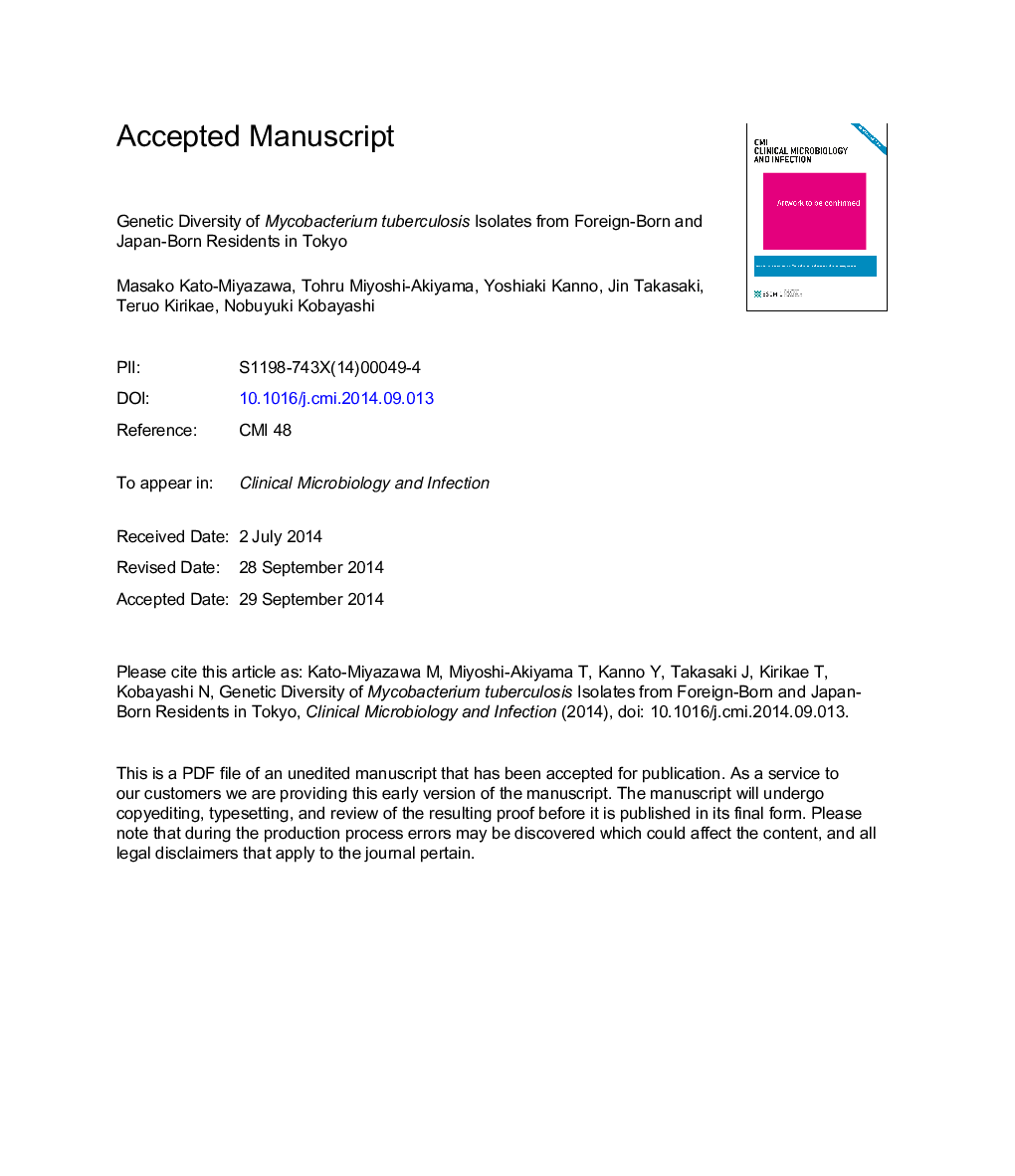| Article ID | Journal | Published Year | Pages | File Type |
|---|---|---|---|---|
| 6129195 | Clinical Microbiology and Infection | 2015 | 41 Pages |
Abstract
Sequences of the full genomes of 259 clinical isolates of Mycobacterium tuberculosis, obtained from foreign-born and Japan-born patients in Tokyo, Japan, were determined, and a phylogenetic tree constructed by concatenated single-nucleotide polymorphism (SNP) sequences. The 259 isolates were clustered into four clades: Lineage 2 (East Asian or “Beijing” genotype; n = 182, 70.3%), Lineage 4 (Euro-American, n = 46, 17.8%), Lineage 1 (Indo-Oceanic, n = 23, 8.9%), and Lineage 3 (East African-Indian, n = 8, 3.1%). Of the 259, 36 (13.9%) were resistant to at least one drug. There was no multi-drug-resistant isolate. Drug resistance was greater for the strains in Lineage 2 than the non-Lineage 2. The proportion of Lineage 2 isolates was significantly smaller in foreign-born (n = 43/91, 47.3%) than in Japan-born (n = 139/168, 82.7%) patients, whereas the proportion of Lineage 1 isolates was significantly larger in foreign-born (n = 19/91, 20.9%) than in Japan-born (n = 4/168, 2.4%) patients. We also found eight SNPs specific to the typical Beijing sub-genotype in Lineage 2, including 4 non-synonymous SNPs. Of the 259 isolates, 244 had strain-specific SNP(s) and small (1-30-bp) insertions and deletions (indels). The numbers of strain-specific SNPs and indels per isolate were significantly larger from foreign-born (median 89, range 0-520) than from Japan-born (median 23, range 0-415) (p 3.66E-15) patients. These results suggested that M. tuberculosis isolates from foreign-born patients had more genetic diversity than those from Japan-born patients.
Related Topics
Life Sciences
Immunology and Microbiology
Microbiology
Authors
M. Kato-Miyazawa, T. Miyoshi-Akiyama, Y. Kanno, J. Takasaki, T. Kirikae, N. Kobayashi,
